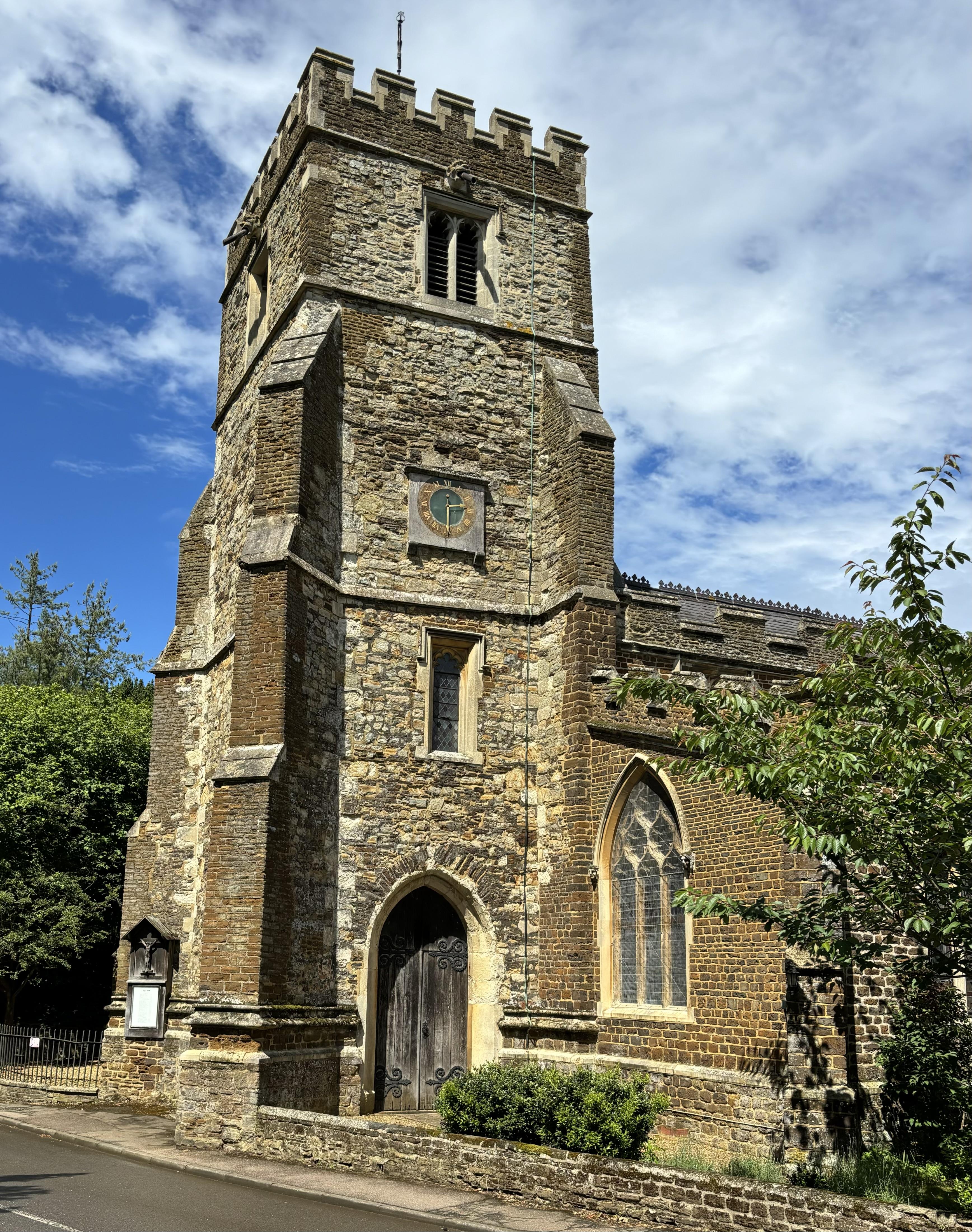St Peter & St Paul
Cranfield, Bedfordshire
The church dates from the 12th century, with restoration was conducted in the 1860s.

St Botolph's, dedicated to a 7th century Anglo-Saxon saint, has been a constant presence in Aspley Guise for over 800 years.
Aspley Guise, Bedfordshire
St Botolph‘s church is situated in the Aspley Guise Conservation Area. It is one of four Grade II* listed buildings in the village and is one of the oldest churches in the district. Its medieval development took place under Anselm de Gyse, whose name linked with the original Saxon Asplea, gives rise to the village name, Aspley Guise.
The oldest areas of the church include the font, floor brasses, north aisle screen, a moulded kings-post truss with figured corbels, and a monument tomb for Sir William Tyrington (guardian to Anselm de Gyse II). All of these date from around the 14th century/early 15th century and are located on the north aisle of the church.
The church with its mainly 15th century tower, made of local ironstone, was significantly renewed and altered in the mid 19th century, when Revd John Vaux Moore added a south aisle to the church and reordered both the access to the church and the church tower. The tower houses a peel of six bells, cast in 1883, and a clock believed to originate in the 17th century. The base of the tower forms the church entrance porch, with doors to the main road to the west and the Lychgate path to the south. The tower houses the ringing chamber, clock and bells and is accessed now by an external staircase.
The church boasts nine beautiful full stained-glass windows and two with remnants, all dating from mid 19th century to early 20th century. These include, The Nativity Chapel ‘Adoration of the Shepherds’ (Corpus of Kempe, 1894) and over the main altar is the Crucifixion window, created in 1910, and designed by Earnest Heasman who was a pupil of Charles Kempe. Most of the stained-glass windows were introduced during the Victorian modernisation of the church.
The interior of the church was painted in mid 20th century, giving the church a more modern, welcoming feel.
Cranfield, Bedfordshire
The church dates from the 12th century, with restoration was conducted in the 1860s.
Great Brickhill, Buckinghamshire
St Mary’s church is the largest of the four churches in the benefice and, dating back to the mid 13th century but with recently added facilities, it boasts a wealth of interesting features and artefacts.
Newport Pagnell, Buckinghamshire
We are an Anglican church that serves God in the town of Newport Pagnell, is friendly and welcoming and offers a place for worship, fellowship and prayer for all.